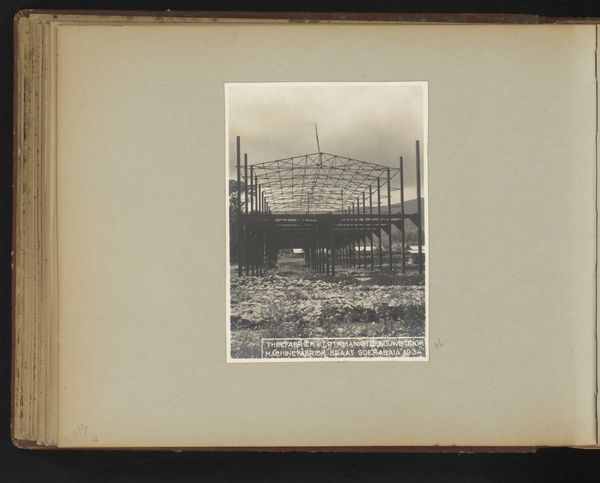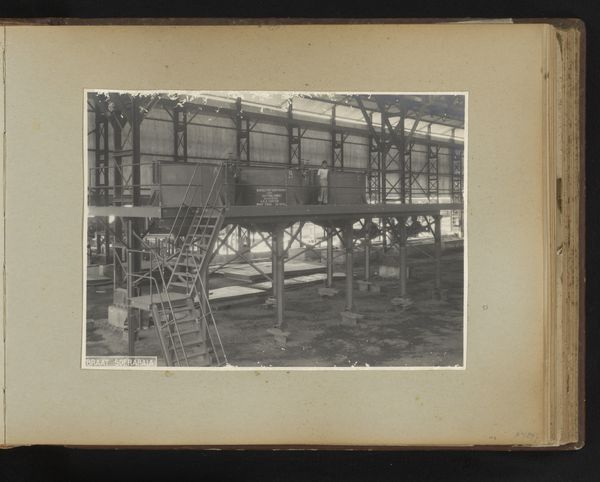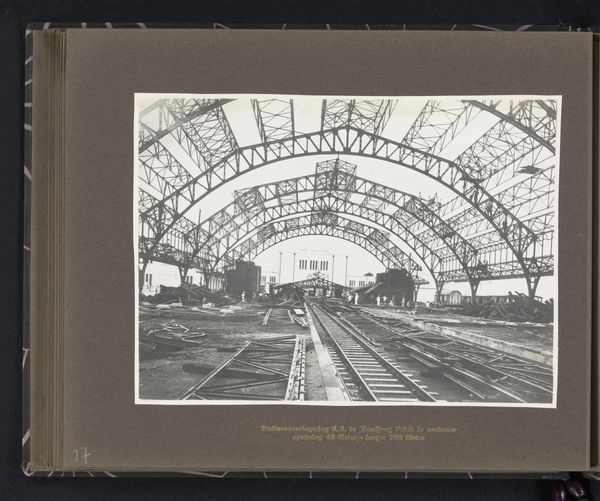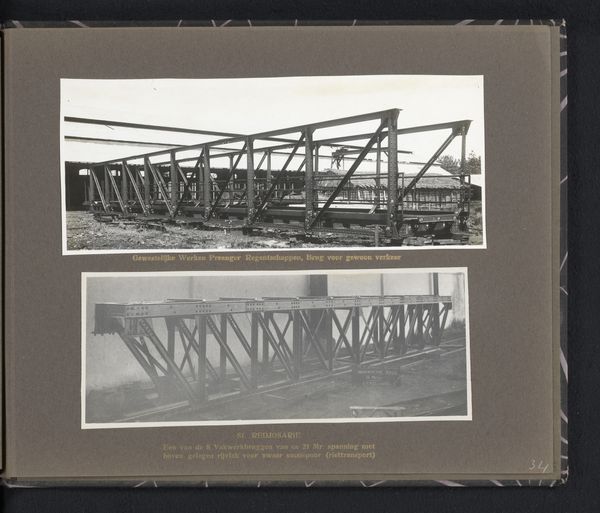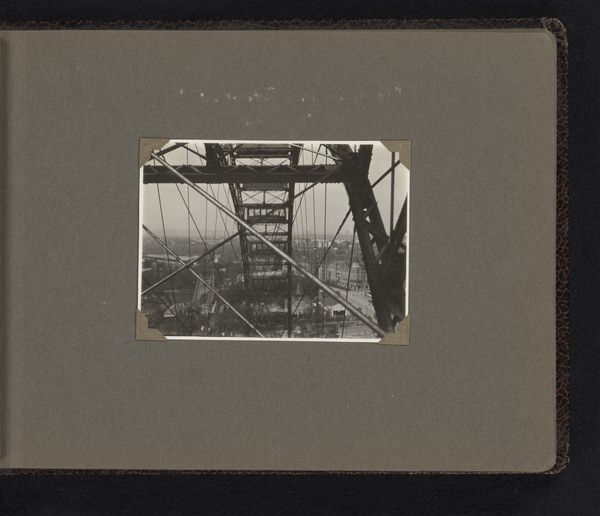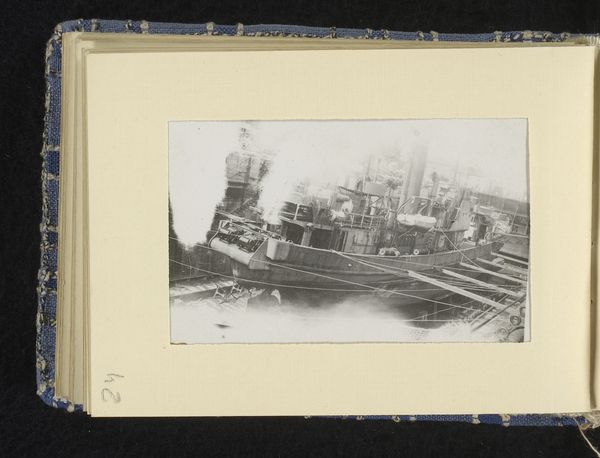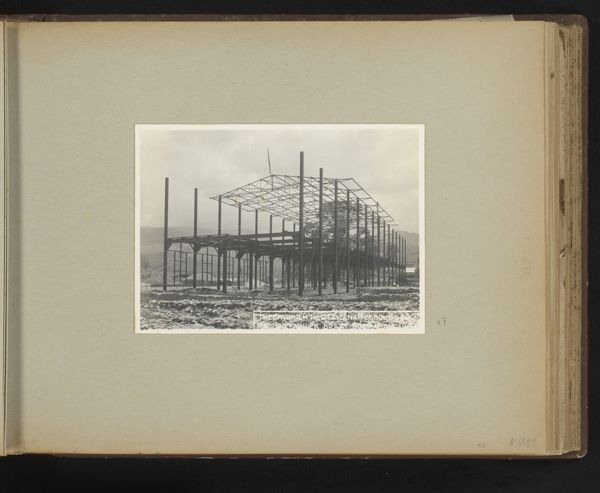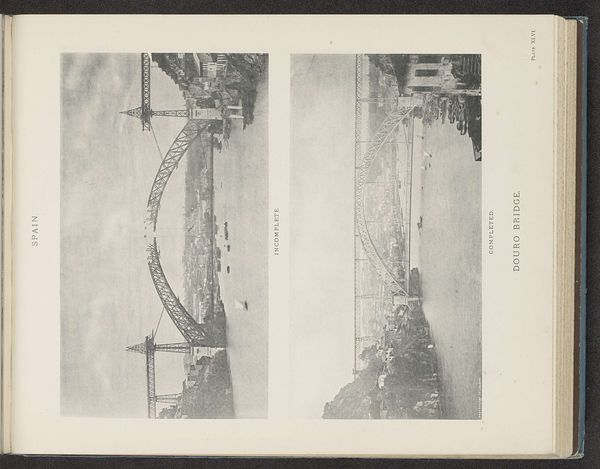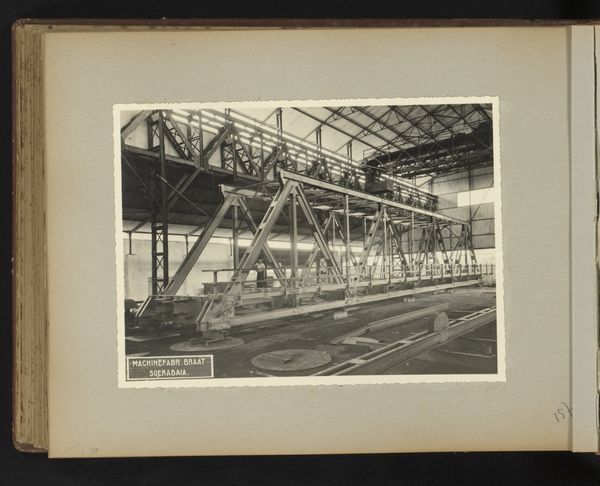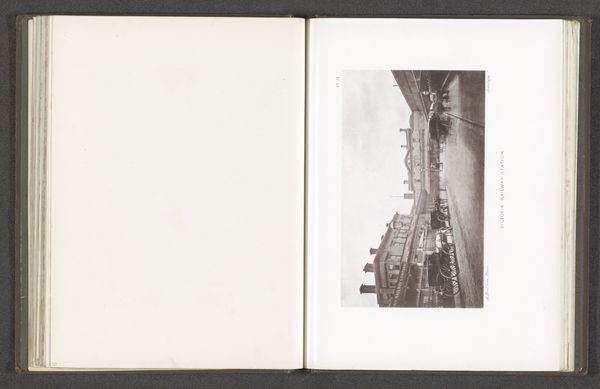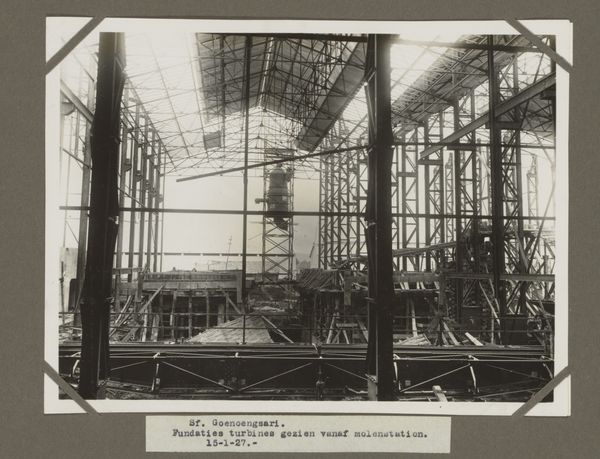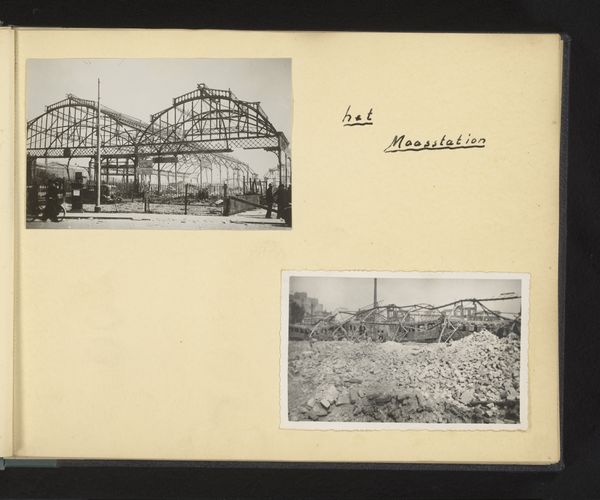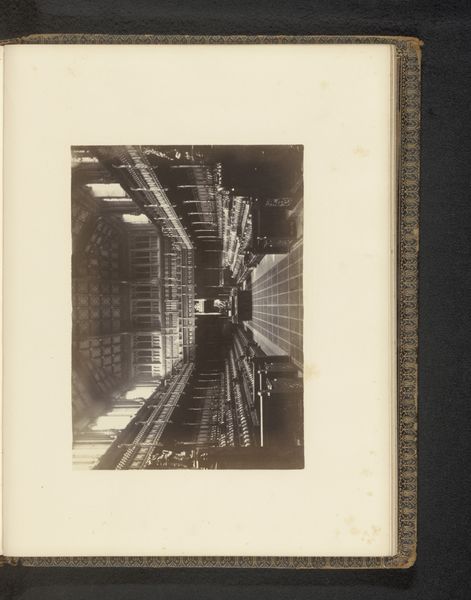
Stationsoverkapping S.S. te Tandjong Priok in aanbouw / spanning 40 Meter - lengte 200 Meter 1916 - 1924
0:00
0:00
print, photography, architecture
# print
#
photography
#
cityscape
#
modernism
#
architecture
Dimensions: height 176 mm, width 233 mm, height 240 mm, width 290 mm
Copyright: Rijks Museum: Open Domain
Curator: The rhythmic clang of progress—that’s the sound this image evokes in me. “Stationsoverkapping S.S. te Tandjong Priok in aanbouw / spanning 40 Meter - lengte 200 Meter,” which roughly translates to “Station roof S.S. at Tandjong Priok under construction / span 40 meters - length 200 meters.” It’s a photograph of a railway station being built in what is now Jakarta, sometime between 1916 and 1924. An anonymous, but clearly skilled photographer captured this moment of colonial modernity. Editor: Industrial haiku. The repeating arches against that white sky...it feels so fragile, even though you know that structure must be immense and strong. There’s a strange poignancy, this lace of iron reaching up into the heavens in a port city that, for most of the world, was then utterly unknown. Curator: Indeed, the photograph hints at larger forces. Tandjong Priok was a crucial port for the Dutch East Indies, and this station exemplifies the infrastructure required to extract resources and maintain control. The photo aestheticizes power, casting its imposition with romanticized shadow play and geometric delight. Editor: So, beauty masking exploitation, perhaps? Or even more complex: progress built on extraction. Is this photograph complicit, then? Adoring the architecture while eliding the labor, the ecological cost? I keep thinking of the backs that must’ve strained beneath those metal beams, and I can’t see those lines the same way anymore. Curator: Absolutely. Colonial photography often sanitized harsh realities to bolster a certain narrative. But looking closely—those smaller figures scrambling amongst the iron, the improvised paths cutting across the land – they resist that sanitization. They remind us of the human element within this grand enterprise. The architecture itself becomes a stage where we are free to rewrite some part of its history. Editor: The potential, or maybe a reminder of that time—captured in monochrome…it brings the station and the railway very near…close. Maybe this tension—between design and its implications, control and its cost—is exactly where the photo's power resides, it allows us, encourages us to ponder not just what it shows, but what it doesn’t. It feels unresolved, beautifully so.
Comments
No comments
Be the first to comment and join the conversation on the ultimate creative platform.
